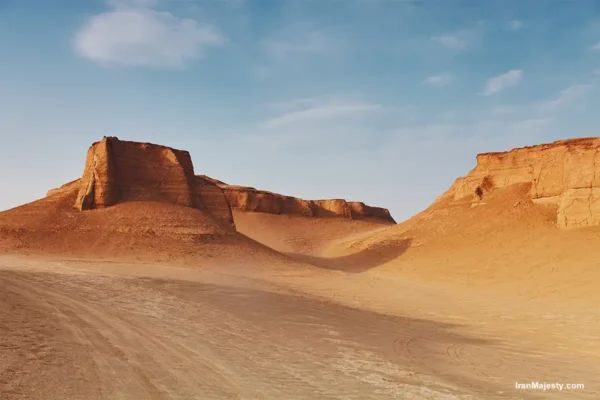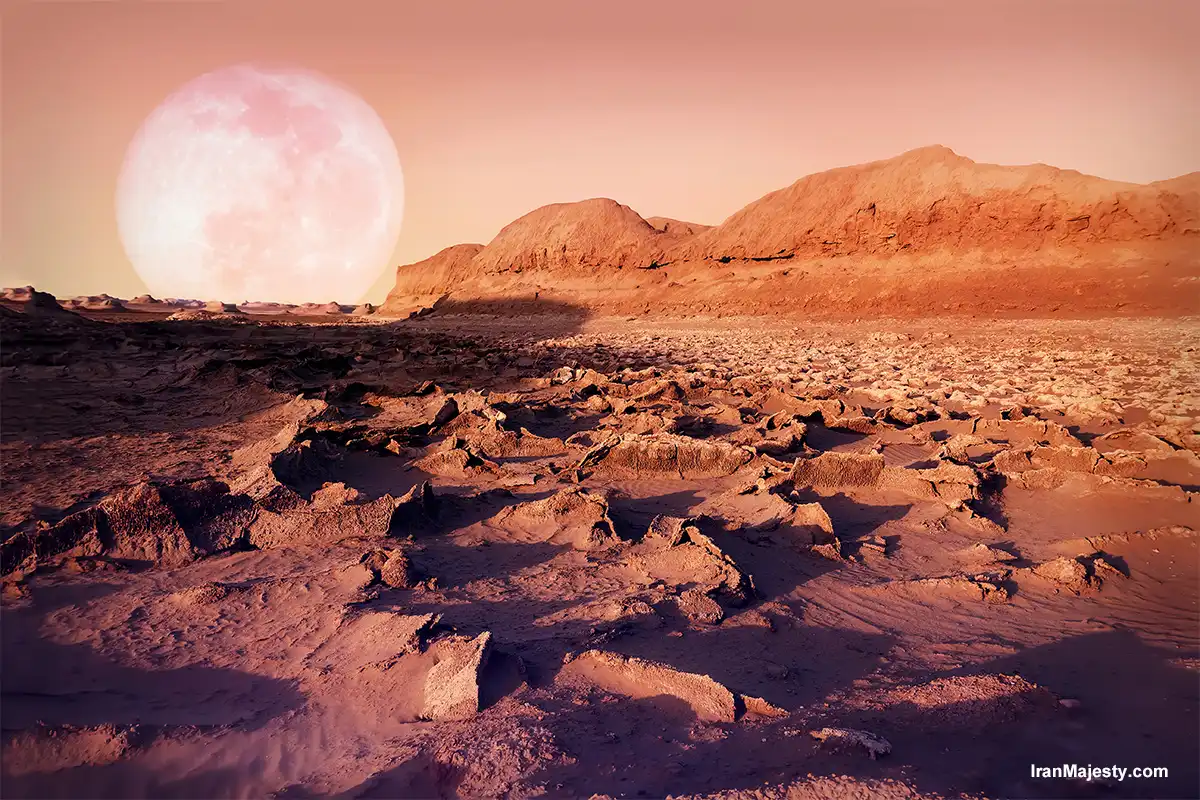Iran is home to some of the most remarkable deserts in the world, showcasing landscapes that vary from endless sandy dunes to salt flats and rocky canyons. These deserts are not only beautiful but also hold deep cultural and historical significance. For travelers, Iran’s deserts offer a chance to experience solitude, adventure, and breathtaking natural beauty, along with a glimpse into the unique ecosystems and lifestyles that have adapted to these environments.
The Lut Desert (Dasht-e Lut) ?
The Lut Desert, also known as Dasht-e Lut, is one of Iran’s most famous deserts, located in the southeast of the country. Known for its extreme temperatures, it’s one of the hottest places on Earth, with temperatures that have been recorded at 70.7°C (159.3°F)! However, the Lut is more than just a hot, barren landscape; it’s a UNESCO World Heritage site and a fascinating natural wonder.
The Lut Desert is famous for its Yardangs—wind-carved formations that look like long, narrow ridges—and Gandom Beryan, a plateau known for its intense heat. Adventurers are drawn to the Lut for its dramatic, otherworldly landscapes, and it’s ideal for stargazing due to the clear desert skies.
The Kavir Desert (Dasht-e Kavir) ?
Another major desert in Iran is the Kavir Desert, also known as the Dasht-e Kavir or the Great Salt Desert. Located in central Iran, this desert spans over 77,600 square kilometers (30,000 square miles) and is filled with salt flats, marshes, and rocky terrains.
A key attraction within Dasht-e Kavir is the Maranjab Desert, near Kashan. This area is famous for its rolling sand dunes, salt lakes, and stunning sunrises and sunsets. The Maranjab Caravanserai, a historic inn along the Silk Road, provides a glimpse into Iran’s ancient trade routes. Maranjab’s picturesque dunes make it a favorite spot for photographers, off-road adventurers, and camel riders.
“Here’s an engaging video by Aydin Abadani on Discovering Iran’s Majestic Deserts. I’m sharing it here to give you visual context—many thanks to the creator for their expertise.”

Mesr Desert: An Oasis of Beauty ?
The Mesr Desert is a popular destination located in Isfahan province. Named after the nearby village of Mesr, this desert features iconic sand dunes and clear skies, making it a fantastic spot for those interested in desert camping, off-roading, and astronomy. Mesr Desert has a unique landscape, with patches of greenery that thrive near underground water sources, creating small oases.
Visitors can enjoy camel rides, watch the star-studded night sky, or interact with local villagers who have preserved their desert way of life. Mesr is especially popular in autumn and winter when the temperatures are cooler, and it provides a peaceful escape from the busier cities.
Rig-e Jenn: The Mysterious Desert ?️
The Rig-e Jenn desert is often referred to as the “Desert of Spirits” and is shrouded in local legends and mystery. Situated in the central part of Dasht-e Kavir, Rig-e Jenn is remote and challenging to navigate, which has contributed to its mysterious reputation. This area is largely untouched by human activity and is known for its tall sand dunes and mirages, which can make it seem both enchanting and intimidating.
Because of its reputation, Rig-e Jenn has become a destination for explorers and adventure-seekers looking for an experience off the beaten path. However, this desert requires careful preparation and, ideally, a local guide due to its harsh and unpredictable environment.
Varzaneh Desert: A Desert Close to Tradition ?️
The Varzaneh Desert, located near the city of Isfahan, is famous for its unique white sand dunes and accessibility. It is one of the easiest deserts to visit for travelers who want to experience the tranquility of the Iranian desert without venturing too far from city life. Varzaneh also holds cultural importance, known for its traditional weaving and unique custom where local women wear white chadors instead of black.
This desert is ideal for those interested in a day trip or a night under the stars. Activities here include sandboarding, camel riding, and exploring ancient sites. Varzaneh is a fantastic destination for visitors looking to experience both Iran’s natural beauty and its local culture.
The Kaluts of Shahdad: Otherworldly Landscapes ?️
The Kaluts in the Shahdad Desert are some of Iran’s most fascinating natural structures. Located in the Lut Desert, the Kaluts are impressive wind-eroded formations that create an almost alien landscape. These natural structures are formed by centuries of wind erosion, creating dramatic shapes that stretch across the desert.
Shahdad is famous for its scenic beauty and for being one of the hottest regions in the Lut Desert. Despite the harsh environment, Shahdad has a small oasis that provides a glimpse of how local communities have adapted to desert life. The Kaluts are particularly magical at sunrise and sunset, when the light casts a golden hue over the formations.

Why You Should Visit Iran’s Deserts ?
Iran’s deserts are places of mystery, adventure, and stunning beauty. Each desert offers something unique, from the mystical sands of Rig-e Jenn to the starry nights of Mesr. Whether you’re seeking a thrilling off-road adventure, a peaceful retreat, or a cultural experience, Iran’s deserts have something for everyone. The landscapes here tell stories of ancient trade routes, myths, and resilient communities who call these vast lands home.
For those looking to escape the ordinary, Iran’s deserts provide an unforgettable experience filled with natural wonders and serene beauty. So, why not step into these majestic landscapes and experience the allure of Iran’s deserts?
If you enjoyed this guide, please leave a comment with your thoughts or any questions you have. Share this article with friends and fellow travelers to inspire them to explore Iran’s deserts!
For more information on Iran’s Majestic Deserts, you can also check out Orient Trips’s article on Iran’s Magnificent Deserts.


0 Comments